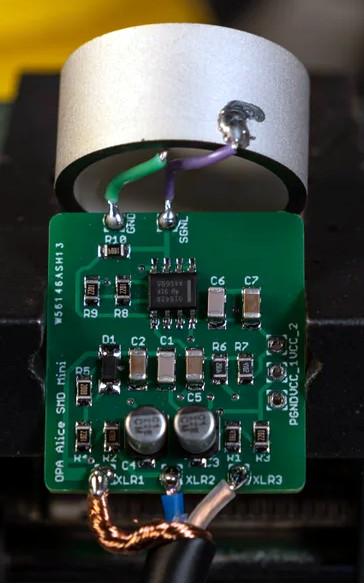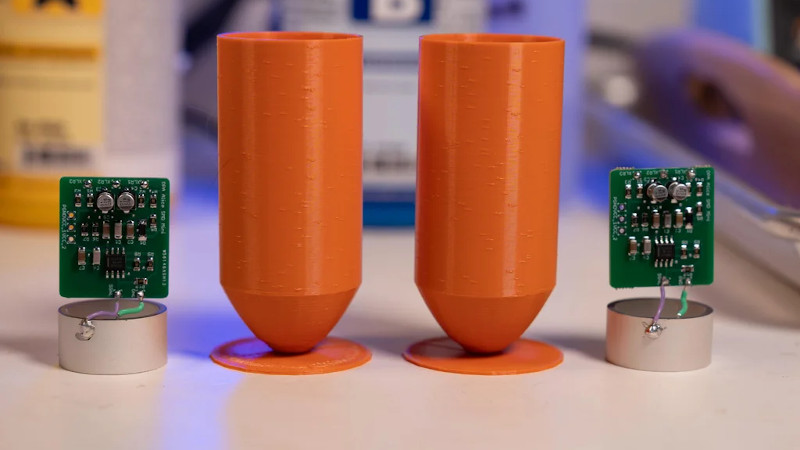The microphone is a pretty ubiquitous piece of technology that we’re all familiar with, but what if you’re not looking to record audio in the air, and instead want to listen in on what’s happening underwater? That’s a job for a hydrophone! Unfortunately, hydrophones aren’t exactly the kind of thing you’re likely to find at the big-box electronics store. Luckily for us, [Jules Ryckebusch] picked up a few tricks in his 20-year career as a Navy submariner, and has documented his process for building a sensitive hydrophone without needing a military budget.
 Fascinated by all the incredible sounds he used to hear hanging around the Sonar Shack, [Jules] pored over documents related to hydrophone design from the Navy and the National Oceanic and Atmospheric Administration (NOAA) until he distilled it all down to a surprisingly straightforward build. The key to the whole build is a commercially available cylindrical piezoelectric transducer designed for underwater communication that, incredibly, costs less than $20 USD a pop.
Fascinated by all the incredible sounds he used to hear hanging around the Sonar Shack, [Jules] pored over documents related to hydrophone design from the Navy and the National Oceanic and Atmospheric Administration (NOAA) until he distilled it all down to a surprisingly straightforward build. The key to the whole build is a commercially available cylindrical piezoelectric transducer designed for underwater communication that, incredibly, costs less than $20 USD a pop.
The transducer is connected to an op-amp board of his own design, which has been adapted from his previous work with condenser microphones. [Jules] designed the 29 x 26 mm board to fit neatly within the diameter of the transducer itself. The entire mic and preamp assembly can be cast inside a cylinder of resin. Specifically, he’s found an affordable two-part resin from Smooth-On that has nearly the same specific gravity as seawater. This allows him to encapsulate all the electronics in a way that’s both impervious to water and almost acoustically transparent. A couple of 3D-printed molds later, the hydrophone was ready to cast.
Interestingly, this isn’t the first homebrew hydrophone we’ve seen. But compared to that earlier entry, which basically just waterproofed a standard microphone pickup, we think this more thoughtful approach is likely to have far better performance.
















Wow! Awesome! I would love to make some and do beam forming with them.
At a bit of a tangent, there is an old open source project I liked HASAS (https://sourceforge.net/projects/hasas/), which was basically an open source version of the US SOSUS system. Maybe it’s worth reviving for passive hydroacoustic analysis.
Why not try a more modern actively supported and developed acoustic analysis platform instead? http://www.pamguard.org/
Thanks for the tip!
Love it! Might be usefull for ecologists as well, to listen which animals are present under water!
Awesome! Might be usefull for ecologists as well, tonlisten which animals are present under water!
Douglas Adams istened for river dolphins using an old BBC trick – a microphone covered in a condom…
in Last Chance to See.
Not sure this counts as a hydrophone?
Phallophone?
Cool project and I did not realize (until shown here) that piezo transducers came in different shapes. Interesting.
Same, I did not know…
Scientific American had a hydrophone in the Amateur Scientist fifty years ago. I have no idea of the date, but it was in the few years that I subscribed and that was over by 1972.
It’s the only one that comes to mind.
I have a vague feeling of some project in a magazine like Elementary Electroics where they put a standard mic in a sealed bottle, but I may be confusing that with projects to lure fish electronically, the electronics and speaker sealed in a container
I like the use of the tubular element. It provides heaps of clues as to how the real people make them..